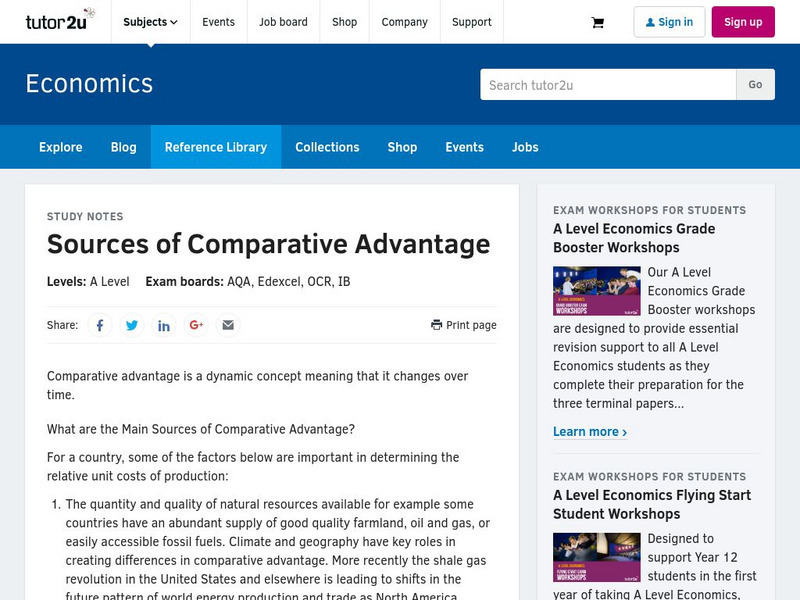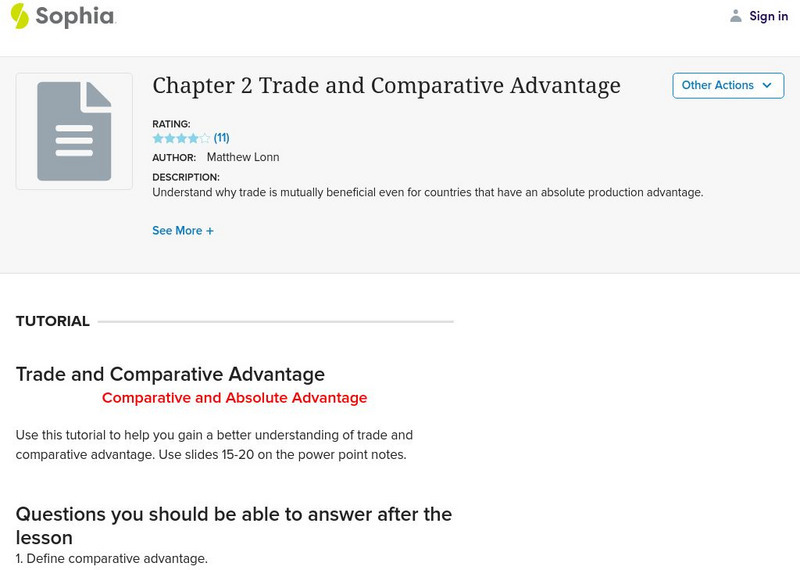ProCon
Video Games and Violence
Is screen time dangerous time? Scholars take a close look at the facts surrounding video games and violence. Pros give evidence connecting violence to video games while cons suggest there is no relationship.
College Board
2001 AP® English Language and Composition Free-Response Questions
Do pictures really last longer? A prompt from the 2001 AP® English Language and Composition Free-Response Questions asks scholars to analyze the opinion that photography actually limits people when it comes to understanding the world....
College Board
2004 AP® Macroeconomics Free-Response Questions Form B
A problem set explores how an international crisis could affect the economic health of Canada using authentic materials from College Board. Other questions ask learners to create and evaluate supply and demand curves and examine factors...
College Board
2015 AP® Macroeconomics Free-Response Questions
Currency exchange is a big factor in governments making economic decisions. Scholars consider various scenarios to evaluate how factors such as interest rates and private investments would affect a nation's economy using a practice test...
Council for Economic Education
Athens and Olive Oil
Athens had olive oil—and lots of it! However, it needed wheat from the Egyptians. Understanding how societies get what they need through advantage and trade can be complicated. A scripted role-play exercise and in-class production...
Curated OER
The Theory of Comparative Advantage
Students take a closer look at comparative advantage. In this economics lesson, students discover details about opportunity cost, comparative advantage, and absolute advantage. Students participate in a simulation that requires them to...
Curated OER
Inside the Vault-Entrepreneurship
High schoolers explore entrepreneurship. In this economic study lesson, students take a pretest on attitudes, review characteristics that make up an entrepreneur, review a list of famous entrepreneurs, and create a 5 minute oral...
Curated OER
The International Way of Thinking
For this International Way of Thinking worksheet, students write answers to questions about basic economic concepts as well as using a chart about production.
Curated OER
The Hatfields and the McCoys
In this Hatfields and McCoys worksheet, students read a short passage and then answer questions and solve problems based on the reading.
Curated OER
Trade -- Lesson Plan on the Theory of Comparative Advantage
Twelfth graders examine the theory of comparative advantage. They read an article about globalization and trading to answer questions promoted by the teacher. They develop their own examples of comparative advantage.
Curated OER
Lesson Plan on the Theory of Comparative Advantage
Twelfth graders practice using new vocabulary related to economics. They discover how to calculate comparative and absolute advantage. They also read different articles about the topic.
Utah State University
Teacher Link: Globalization
This is an excellent unit concerning globalization. It contains a great deal of background information about globalization, links to other websites, balanced views, questions, and activities. The goals and content are clear and the...
Robert Schenk, PhD
Cyber Economics: Comparative Advantage
Article with charts and links to related material discusses how free trade is a result of comparative advantage, and how consumers can consume beyond their original production possibilities frontier if they specialize and trade.
Sophia Learning
Sophia: The Production Possibilities Frontier
Through a series of videos and notes, lesson gives students a better understanding of the production possibilities curve and how it applies to economics.
Department of Defense
Do Dea: The United States and Globalization
This self-guided unit addresses the economic interdependence of communities and countries across the globe and the economic development that is taking place. Included are lessons, self-assessments, background information, and learning...
Texas Education Agency
Texas Gateway: The Production Possibilities Frontier and Social Choices
By the end of this section, you will be able to interpret production possibilities frontier graphs, contrast a budget constraint and a production possibilities frontier, explain the relationship between a production possibilities...
Council for Economic Education
Econ Ed Link: Us and Eu Go Bananas Over Trade
Economists generally agree that free trade helps to improve the overall quality of life in countries that participate. However, disagreements do arise concerning trade agreements. This lesson looks at a disagreement between the US and EU...
Hartford Web Publishing
World History Archives: Comparative Advantage Today
This article from Hartford Web Publishing applies the concept of Comparative Advantage in today's world. Discussion of import and export explains how obstacles can be overcome.
University of Washington
Complex Dynamics in a Model of Economic Specialization [Pdf]
This article provides an in-depth study of how and why there is specialization by workers in an economy, with considerable attention given to the philosophies of Adam Smith.
Library of Economics and Liberty
Library of Economics and Liberty: Comparative Advantage
This article provides a thorough examination of comparative advantage, absolute advantage, and opportunity cost, and how these three terms are related.
Tutor2u
Tutor2u: Sources of Comparative Advantage
This site describes how comparative advantage and specialization cause international trade.
Sophia Learning
Sophia: Trade and Comparative Advantage
Through illustrated notes and a related video, students will gain an understanding of comparative advantage and why trade is beneficial. [4:10]
Curated OER
Virtual Economy: David Ricardo: Theories
This site discusses the two theories that Ricardo created. The Distribution theory and the International Trade theory (Comparative) are explained in detail.
Council for Economic Education
Econedlink: Trade, Exchange and Interdependence
This video teaches the concept of Trade, Exchange and Interdependence. People do not make everything that they and their family use: that is, they do not grow all their own food, sew their own clothes, build their own house and provide...





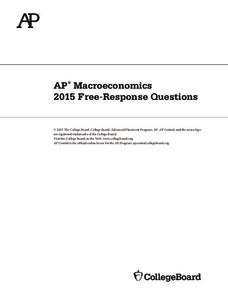









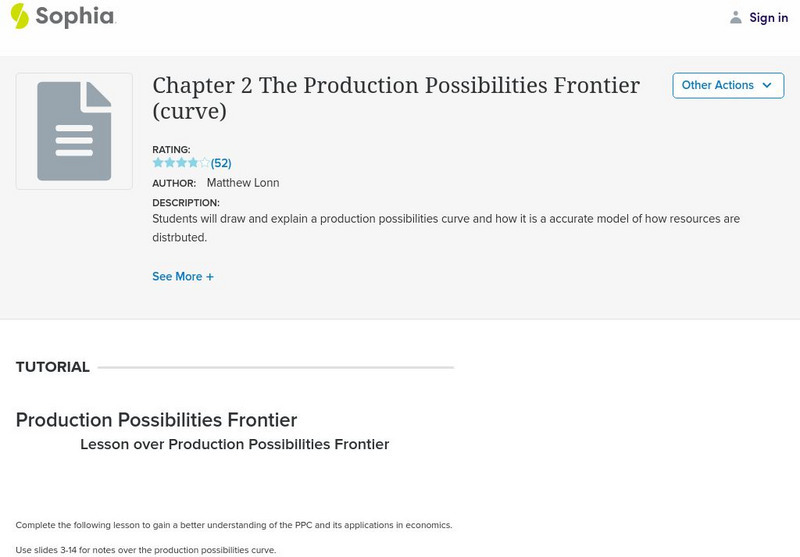
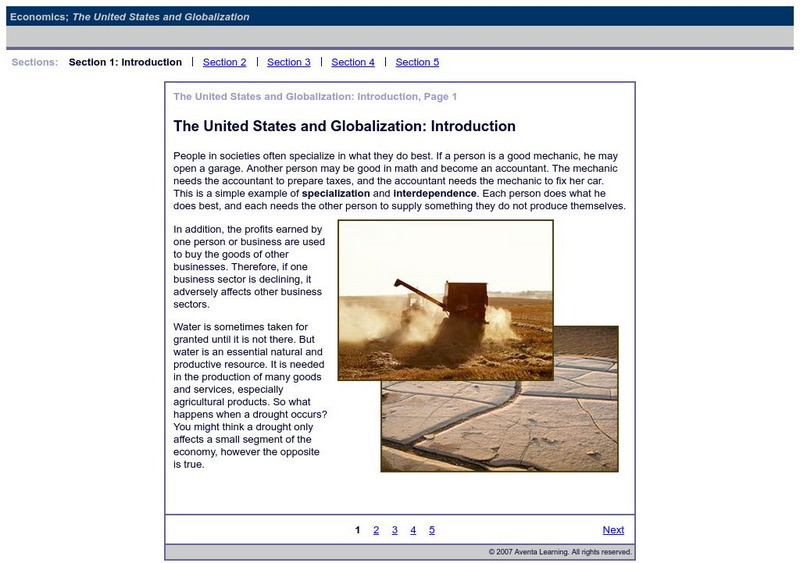
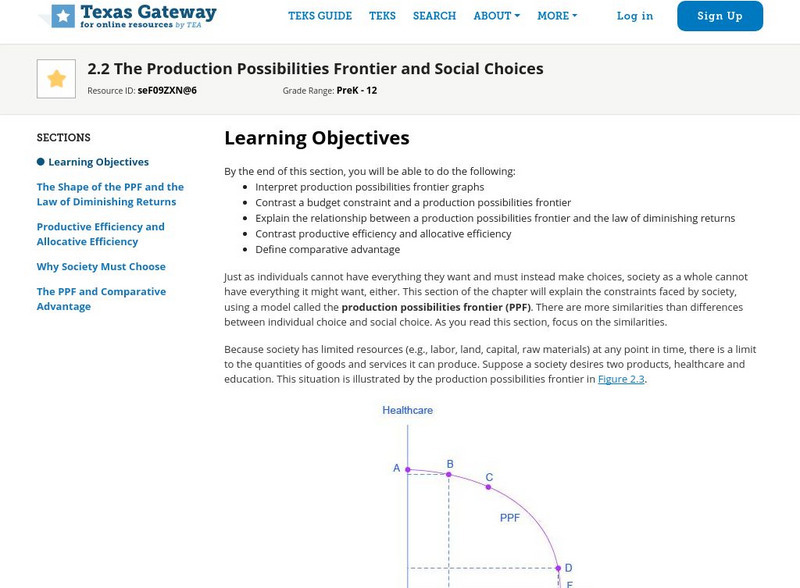


![Complex Dynamics in a Model of Economic Specialization [Pdf] Activity Complex Dynamics in a Model of Economic Specialization [Pdf] Activity](https://d15y2dacu3jp90.cloudfront.net/images/attachment_defaults/resource/large/FPO-knovation.png)
